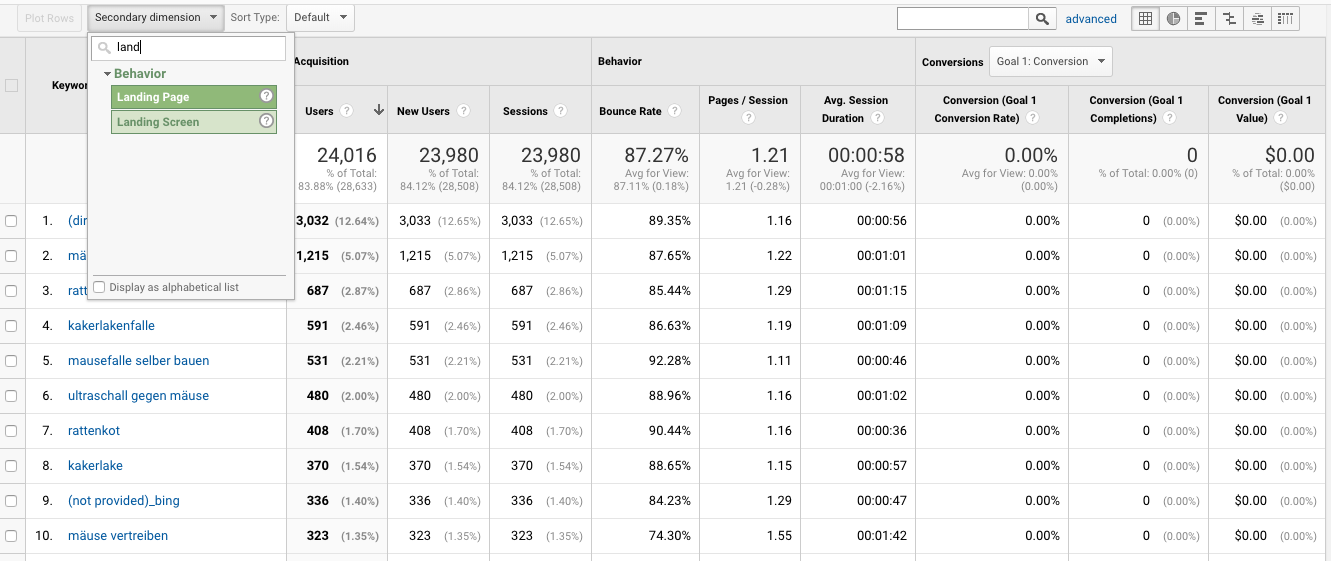Mastering Google Analytics: Using Secondary Dimension for Deeper Analysis
Mastering Google Analytics: Using Secondary Dimension for Deeper Analysis
Blog Article
Unlocking the Power of Additional Dimension Analytics for Enhanced Information Insights and Decision-Making
In the world of data analytics, main dimensions commonly take the spotlight, however the real deepness of insights lies within the world of additional measurements. These added data factors use a nuanced viewpoint that can brighten relationships and patterns not easily apparent in the beginning look. By taking advantage of the power of secondary dimension analytics, companies can unveil concealed fads, discover relationships, and remove more purposeful conclusions from their information. The capacity for enhanced decision-making with the use of these secondary dimensions is huge, assuring a much deeper understanding of complex information collections and leading the way for more informed tactical selections.
Significance of Additional Measurements
Exploring the relevance of secondary measurements in analytics reveals the hidden layers of information understandings vital for informed decision-making in different domains. Second dimensions give a deeper understanding of key information by providing additional context and perspectives. By integrating secondary measurements right into analytics, organizations can remove much more thorough and nuanced understandings from their datasets.
One key value of additional dimensions is their capability to segment and categorize primary data, enabling an extra in-depth analysis of specific subsets within a dataset. When looking at the information as a whole, this segmentation makes it possible for businesses to identify patterns, patterns, and outliers that may not be apparent. Moreover, secondary dimensions help in discovering connections and reliances in between various variables, resulting in more exact projecting and predictive modeling.
Moreover, additional measurements play an important duty in enhancing data visualization and coverage. By adding additional dimensions to visualizations, such as charts or graphs, experts can produce extra helpful and informative depictions of information, promoting better interaction of searchings for to stakeholders. Overall, the assimilation of secondary dimensions in analytics contributes in opening the complete capacity of data and driving evidence-based decision-making.
Trick Advantages of Utilizing Secondary Measurements
Utilizing additional measurements in analytics supplies organizations a calculated benefit by boosting the deepness and granularity of data understandings. By dissecting data utilizing additional measurements such as time, area, gadget type, or individual demographics, companies can reveal patterns, fads, and relationships that may or else remain covert.
In addition, the utilization of secondary dimensions improves the context in which main data is translated. By leveraging additional dimensions in analytics, companies can harness the complete capacity of their data to drive far better decision-making and achieve their company objectives.
Advanced Information Analysis Methods
A deep study innovative data evaluation strategies reveals sophisticated approaches for drawing out valuable understandings from intricate datasets. One such strategy is maker discovering, where algorithms are used to recognize patterns within data, predict outcomes, and make data-driven choices. This technique permits the automation of analytical version building, enabling the processing of huge quantities of data at a quicker pace than conventional approaches.
Another innovative technique is anticipating analytics, which makes use of analytical formulas and artificial intelligence techniques to forecast future results based upon historical information. By evaluating patterns and fads, companies can expect client behavior, market trends, and prospective threats, encouraging them to make proactive choices.
Moreover, message mining and belief evaluation are valuable strategies for extracting insights from disorganized data sources such as social media sites remarks, customer testimonials, and survey feedbacks. By evaluating text data, companies can understand client viewpoints, determine emerging fads, and enhance their products or visit site solutions based upon feedback.
Enhancing Decision-Making Via Secondary Measurements

Enhancing decision-making via additional dimensions enables organizations to make even more educated and targeted critical choices. By find more segmenting customer data based on secondary dimensions like acquiring history or involvement degrees, firms can tailor their advertising approaches to specific target market sections, leading to enhanced conversion rates and customer complete satisfaction. Second measurements can aid determine connections and partnerships in between different variables, enabling organizations to make data-driven decisions that drive growth and earnings.
Implementing Second Dimension Analytics
When including additional dimensions in analytics, companies can unlock much deeper understandings that drive calculated decision-making and improve general efficiency. Executing second dimension analytics needs an organized approach to make certain effective use of this powerful device. The initial step is to determine the key metrics and measurements that line up with the company's strategic objectives. This entails comprehending the details concerns the organization looks for to respond to and the information factors called for to address them.

Moreover, companies need to leverage advanced analytics tools and technologies to enhance the procedure of integrating secondary measurements. These devices can automate information processing, evaluation, and visualization, permitting organizations to concentrate on interpreting understandings instead than manual information control.
Final Thought
In conclusion, second measurement analytics play a vital function in improving information insights and decision-making processes. By using advanced data analysis techniques and implementing additional measurements successfully, companies can unlock the power of their information to drive tactical organization decisions. The vital benefits of using second measurements can not be overstated, as they give a much deeper understanding of data fads and partnerships. It is essential for organizations to take advantage of secondary dimension analytics to stay competitive in today's data-driven landscape.
In the realm of information analytics, primary dimensions often take the limelight, yet the real deepness of insights exists within the world of additional measurements.Using second measurements in analytics provides organizations a strategic advantage by enhancing the depth and granularity of information insights. By leveraging secondary measurements in analytics, companies can harness the complete potential of their information to drive far better decision-making and accomplish their service goals.
Implementing anchor information validation processes and routine audits can help preserve information quality and reliability.
By using innovative data evaluation strategies and carrying out additional measurements efficiently, companies can unlock the power of their data to drive tactical organization choices.
Report this page